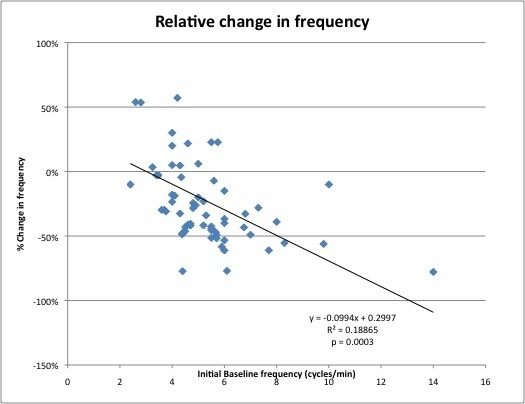|
Back to Annual Meeting Program
Long-Term Effects of Gastric Stimulation on Gastric Electrical Physiology
Patrick a. Williams*1, Yana Nikitina1, Thomas L. Abell1, Christopher J. Lahr2, Thomas S. Helling2
1Digestive Diseases, University of Mississippi Medical Center, Jackson, MS; 2Surgery, University of Mississippi Medical Center, Jackson, MS
Introduction: This study evaluates the modeling of gastric electrophysiology (GEP) tracings during long term gastric electrical stimulation (GES) for gastroparesis (GP). Electrogastrography (EGG) via serosal recordings was performed on gastroparesis patients through stimulator leads prior to stimulation and again with stimulator off at time of stimulator replacement for battery depletion. We hypothesized that serosal EGG may change over time representing gastric remodeling from GES.
Patients: 66 patients with gastroparesis underwent placement of gastric stimulator for refractory symptoms. EGG was performed after the gastric leads were placed but before stimulation was begun. Patients underwent continuous stimulation until pacer batteries depleted and the stimulator was then replaced. At the time of stimulator replacement, after the stimulator was removed, but before the new pacemaker was attached, serosal EGG was again performed using the gastric leads. Mean age at initial GES placement was 44 years (range: 8-76); current mean age is 49; the majority of the subjects were female (n=52, 79%). Only a minority had diabetes-induced gastroparesis (n=16, 24%); the remainder were either idiopathic, post-surgical, or sarcoidosis-induced.
Methods: At the time of GES placement, mucosal EGG is performed through the GES leads. Once the GES battery expires, it is replaced. At the time of replacement, EGG is performed again, and GEP tracings are repeated.
Results: After a mean of 3.9 years (46 months) of GES therapy, the mean unstimulated baseline frequency for gastroparesis patients before initial GES therapy was 5.27 cycles/min (SD=1.89) and declined to 3.75 (1.58) after replacement (p=0.000001), with a mean baseline frequency decrease of 0.03/month (Table 1, Figure 1). The mean amplitude was 0.33 mV (0.39) before initial GES therapy and decreased to 0.30 (0.34) afterward (p=0.66). The frequency/amplitude ratio was 40.0 (40.7) before initial GES therapy and decreased favorably to 24.3 (25) afterward (p=0.002).
Conclusion: Long-term gastric stimulation causes improvement in basal unstimulated gastric frequency towards normal.
Table 1 - Comparison of Mean Serosal EGG Values of Primary vs. Replacement GES in Gastroparesis Patients
| Frequency | Amplitude | Freq/Amp | | Primary Serosal EGG | 5.27 | 0.33 | 40 | | Replacement Serosal EGG | 3.75 | 0.3 | 24.3 | | p-value | 0.000002 | 0.66 | 0.002 | | Normal EGG values | 2.7-3.3 | 0.50 | <10 |

Figure 1 - Relationship between the initial baseline frequency and the % change in frequency, which illustrates that the higher the baseline frequency, the more likely the frequency is to improve. p = 0.003.
Back to Annual Meeting Program
|


